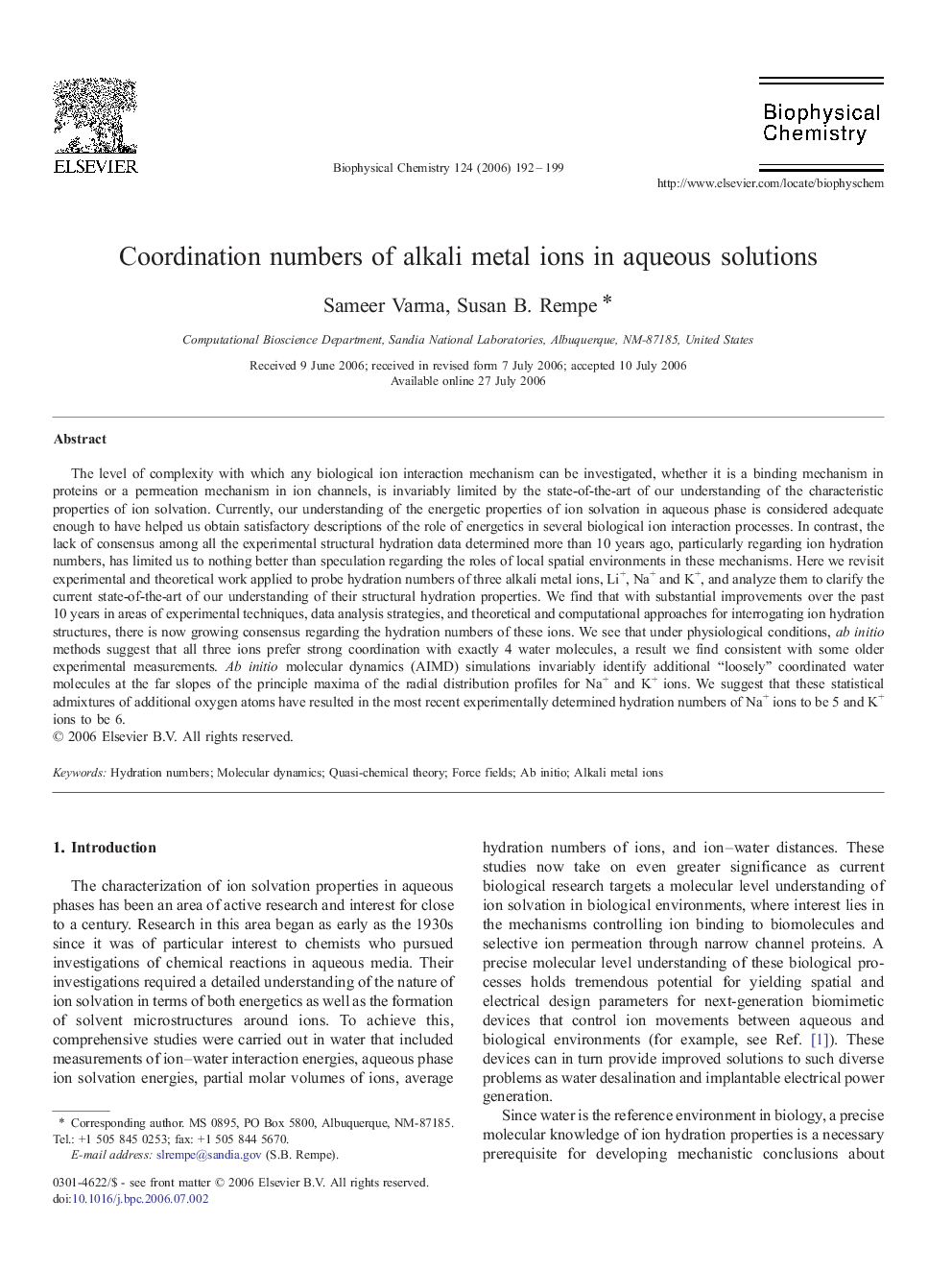| Article ID | Journal | Published Year | Pages | File Type |
|---|---|---|---|---|
| 5372182 | Biophysical Chemistry | 2006 | 8 Pages |
The level of complexity with which any biological ion interaction mechanism can be investigated, whether it is a binding mechanism in proteins or a permeation mechanism in ion channels, is invariably limited by the state-of-the-art of our understanding of the characteristic properties of ion solvation. Currently, our understanding of the energetic properties of ion solvation in aqueous phase is considered adequate enough to have helped us obtain satisfactory descriptions of the role of energetics in several biological ion interaction processes. In contrast, the lack of consensus among all the experimental structural hydration data determined more than 10Â years ago, particularly regarding ion hydration numbers, has limited us to nothing better than speculation regarding the roles of local spatial environments in these mechanisms. Here we revisit experimental and theoretical work applied to probe hydration numbers of three alkali metal ions, Li+, Na+ and K+, and analyze them to clarify the current state-of-the-art of our understanding of their structural hydration properties. We find that with substantial improvements over the past 10Â years in areas of experimental techniques, data analysis strategies, and theoretical and computational approaches for interrogating ion hydration structures, there is now growing consensus regarding the hydration numbers of these ions. We see that under physiological conditions, ab initio methods suggest that all three ions prefer strong coordination with exactly 4 water molecules, a result we find consistent with some older experimental measurements. Ab initio molecular dynamics (AIMD) simulations invariably identify additional “loosely” coordinated water molecules at the far slopes of the principle maxima of the radial distribution profiles for Na+ and K+ ions. We suggest that these statistical admixtures of additional oxygen atoms have resulted in the most recent experimentally determined hydration numbers of Na+ ions to be 5 and K+ ions to be 6.
